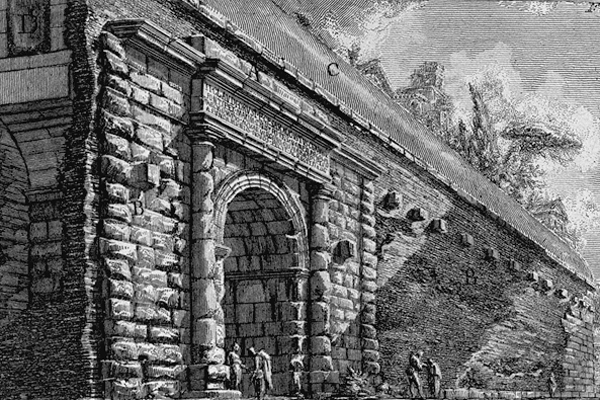
Three half-obscured arches of the Aqua Virgo, their piers still buried in the accumulated silt of twenty centuries, support the specus of the aqueduct (the covered channel through which the water flowed). Now nearly level with the present-day Via del Nazareno, one of the arches originally spanned an ancient road, its engaged columns framing the projected attic. An inscription on both sides (so as to be read by those traveling in each direction) declares that Claudius rebuilt this stretch of the arcade (circa AD 45) after it had been robbed of stone by Caligula for another project, possibly "an amphitheatre beside the Saepta" (Suetonius, Life of Caligula, XX1; Dio, Roman History, LIX.10.5). But this section of the Aqua Virgo is not near the Saepta Julia, and it may be that the damage simply was preliminary construction work that later was completed by Claudius.
The full inscription reads
"Tiberius Claudius Caesar Augustus Germanicus, son of Drusus, pontifex maximus, in his fifth year of tribunician power, imperator eleven times, father of his country, consul designate for the fourth time, made new and restored from their foundations the arcades of the Aqua Virgo, since they had been knocked down by Gaius Caesar [Caligula]."
Indeed, one still can discern the word GERMANICVS concluding the top line.

This etching of the Condotto dell'acqua Vergine is from Piranesi's Antichita Romane (1756) and shows the arch as it appeared in the eighteenth-century.
The Acquedotto Vergine, as it is identified at Via del Nazareno, 14 is almost completely obscured from the street by a heavy wire-mesh fence. The picture above was taken by going to the Bar Accademia next door and ordering a Campari and soda. Then, walking downstairs to the landing and moving aside the chairs that were stacked there, it was possible to sit on the sill of the window and extend the camera as far as possible between the narrow bars.
See also Arch of Claudius.